
All categories
Featured selections
Trade Assurance
Buyer Central
Help Center
Get the app
Become a supplier

(1362 products available)
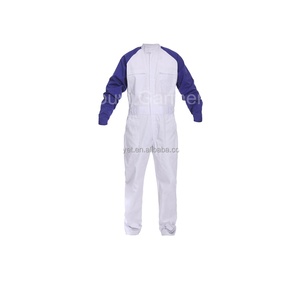
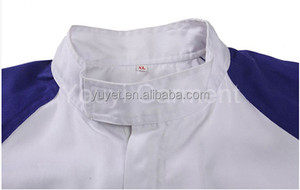
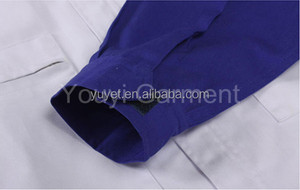
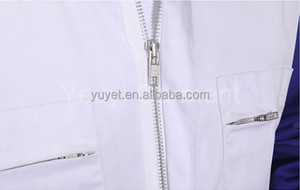
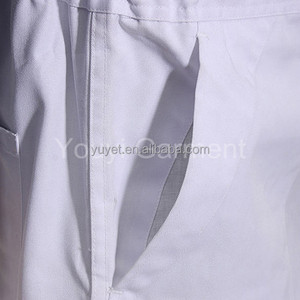
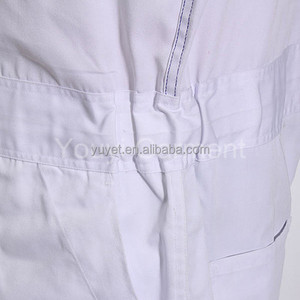




























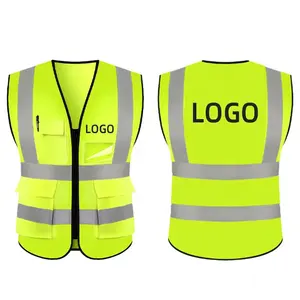

















Workman clothes are specially designed garments intended for various professions and industries. They prioritize functionality, comfort, and safety to enhance work efficiency. Here's a brief overview of different work clothes:
High-Visibility Clothing
High-visibility clothing enhances safety in low-light or hazardous environments. It includes bright colors like neon yellow or orange, often with reflective strips. This gear is vital for construction, roadwork, and emergency services. It ensures workers are seen by others, reducing accident risks. The clothing is durable and comfortable, designed for long hours outdoors. It consists of vests, jackets, trousers, and full-body suits. Compliance with safety standards is crucial for effective protection. Overall, high-visibility clothing is essential for worker safety in risky settings.
Coveralls and Overalls
Coveralls and overalls are work clothes that provide full-body protection. Designed from durable materials like cotton or polyester, they shield against dirt, grease, and minor hazards. Coveralls are one-piece suits, ideal for tasks requiring extensive movement, like automotive work or painting. Overalls, featuring suspenders and open tops, are preferred in construction and farming. They offer practicality and ease of use with pockets for tools and accessories. Both designs enhance clothing longevity and reduce change frequency. Their robust construction supports various industrial tasks, ensuring worker comfort and safety.
Uniforms
Work uniforms are standardized clothing worn by employees in specific professions. They promote team identity and equality, fostering a sense of belonging among workers. Uniforms vary by industry; for instance, chefs wear coats and hats, while healthcare staff dons scrubs. They enhance professionalism and streamline customer recognition. In retail, employees wear branded attire to represent the store. Uniforms also improve safety by providing specific gear for hazardous tasks. They support hygiene in food services and healthcare. Overall, work uniforms simplify daily attire choices and enhance workplace cohesion and efficiency.
Fire-Resistant Clothing
Fire-resistant clothing protects workers from flames and heat. It's vital in industries like oil and gas, welding, and firefighting. Made from specialized fabrics like Nomex or Kevlar, it resists ignition and slows flame spread. This gear includes jackets, pants, coveralls, and gloves. Each piece is designed to shield skin and vital organs from severe burns. The clothing also offers thermal protection to prevent heat-related injuries. Adhering to safety standards is crucial for effective protection. Overall, fire-resistant clothing enhances worker safety in hazardous environments, reducing injury risks and promoting confidence.
Specialized Tools and Accessories
Workman clothes are often accompanied by specialized tools and accessories tailored to specific jobs. Hard hats, safety goggles, gloves, and steel-toed boots are common. These accessories ensure safety and enhance functionality in the workplace. For instance, gloves protect hands while offering grip, and safety goggles shield eyes from debris and chemicals. Each tool and accessory serves a distinct purpose, contributing to a safer and more efficient work environment. It's crucial to select the right equipment for each profession to meet safety standards and optimize performance. Together, these components create a comprehensive work attire system that prioritizes protection and efficiency.
The design of workman clothes is multifaceted and hinges on the specific requirements of the vocation. Below are the key design components to consider.
Functionality
Functionality is the chief design criterion for work clothes. They should allow the worker to perform his duties efficiently. For instance, a mechanic's overall should have large pockets to hold tools. Similarly, a chef's jacket should have a double-breasted design to shield the body from hot spills.
Comfort
Comfort is vital in workman clothes design. Comfortable clothes reduce fatigue and enhance productivity. For instance, an electrician's shirt should have a loose fit to allow freedom of movement. Additionally, a construction worker's vest should have moisture-wicking fabric to keep the body dry in hot weather.
Durability
Durability is another key factor in designing workman clothes. They should withstand wear and tear. For example, a laborer's pants should have reinforced knees to resist abrasion. Also, a firefighter's suit should be made of tear-resistant fabric to withstand tough conditions.
Safety
Safety is a critical element in work clothes design. They should protect the worker from hazards. For instance, a construction worker's shirt should have reflective strips for visibility. Moreover, a welder's jacket should have flame-retardant fabric to shield the body from sparks.
Style
Style is also important in workman clothes design. Stylish work clothes boost morale and enhance teamwork. For example, an office worker's shirt should have a classic design that is easy to iron. Also, a nurse's scrubs should have attractive colors and patterns to make them look friendly.
Adaptability
Adaptability in workman clothes allows for easy modification to suit different tasks and environments. This is achieved through versatile designs. For example, modular work uniforms can incorporate removable and adjustable components. These include sleeves, pant legs, and tool belts. Hence, they can easily change from a full-sleeve shirt to a short-sleeve one. They can also convert from long pants to shorts. This is suitable for varying weather conditions and specific job requirements. Fabrics with integrated smart technology can also enhance adaptability. These fabrics can change their properties in response to environmental factors. Such as temperature or humidity, providing optimal comfort and performance at all times.
Workman clothes can be styled and worn in various ways depending on the occasion. However, when wearing or matching these clothes, the color scheme should be considered as the first step. If the work clothes have bright colors, they should be combined with neutral-colored pants or skirts to avoid a loud appearance. Dark-colored work shirts can be paired with lighter pants to create a balanced look. Another aspect that needs to be considered is the pattern and texture of the clothes. If one piece has a strong pattern, the other pieces should be in solid colors and devoid of any patterns to avoid clashing.
Overalls can be worn with various other clothing items to achieve different looks. For instance, a pair of overalls can be worn with a striped shirt underneath to create a nautical look. In addition, a chunky knit sweater can be worn over the overalls for a cozy, wintry feel. On the other hand, a fitted turtleneck can be worn under the overalls for a sleek, modern look. This is because overalls come in different colors and designs, thus easy to match with other clothing items to achieve a desired look.
For an informal appearance, blue-collar uniforms can be combined with casual items such as jeans or shorts. For instance, work shirts can be worn with jeans or shorts and sneakers for an informal and practical look. This outfit is perfect for running errands or doing chores around the house. Additionally, a work jacket can be layered over a t-shirt with jeans for a casual weekend look. Also, work pants can be worn with a hoodie or sweatshirt for a comfortable and relaxed outfit.
In general, when going for a formal look, workman clothes should be combined with more sophisticated items. For instance, a work blazer can be worn with dress pants or a skirt and a button-down shirt for a polished appearance. This outfit is suitable for a job interview or a business meeting. A work shirt can also be worn with dress pants and a tie for a professional and put-together look.
Accessories are also very important when it comes to workman clothes. Belts, for instance, can be used to cinch in loose-fitting work shirts or overalls for a more tailored appearance. Hats can also be worn for a touch of style and practicality. Work boots should be complemented with functional and stylish accessories, such as a durable watch or a leather tool belt, to enhance the overall appearance and functionality. The condition of the material being worked on should be taken into consideration when choosing accessories. Additionally, work gloves should be chosen based on the type of work being done. Soft leather gloves are ideal for manual labor, while heavy-duty fabric gloves offer better protection for construction work.
Q1. What do workmen wear?
A1. The specific clothing depends on the workman's job description and the industry he is working in. Generally, workmen wear durable clothing such as overalls, uniforms, work shirts, work pants, shorts, and skirts, which are designed to provide ease of movement and durability. In construction and manual labor, workmen wear high-visibility vests and shirts, hard hats, safety boots, gloves, and protective clothing like coveralls or hazmat suits. Mechanics wear uniforms, shop coats, and gloves, while electricians wear long-sleeved shirts, work pants, and safety gear. In offices, workmen wear business casual clothing and may have special apparel in healthcare and food service.
Q2. What are the important characteristics of workmen's clothing?
A2. Important characteristics of workmen's clothing include durability, comfort, safety, functionality, and ease of care. Workmen's clothing must be robustly made to withstand wear and tear and from materials that can be easily cleaned. They should also be affordable so that employers can provide them for their employees.
Q3. What colors are suitable for work clothes?
A3. The choice of color for work clothes depends on several factors, including the nature of the work, safety considerations, and personal preference. Bright, high-visibility colors like neon yellow, orange, and green are suitable for construction and roadwork to enhance visibility and safety. Dark colors like navy blue, black, and charcoal gray are practical for manual labor as they hide stains better and are more durable. Light colors like white, light gray, and pastels are suitable for indoor work, offices, and customer-facing roles, providing a clean and professional appearance.
Q4. What are the seasonal considerations when choosing clothes for work?
A4. Seasonal considerations involve selecting appropriate fabrics and styles for the weather conditions. Workmen's clothing for spring and fall should be layered for variable temperatures, using materials like cotton, polyester, and light fleece. Summer clothing should be lightweight, breathable, and moisture-wicking, made from fabrics like linen, lightweight cotton, and mesh. Winter work clothes should prioritize warmth, insulation, and protection from the elements using materials like wool, insulated polyester, and waterproof outer layers.